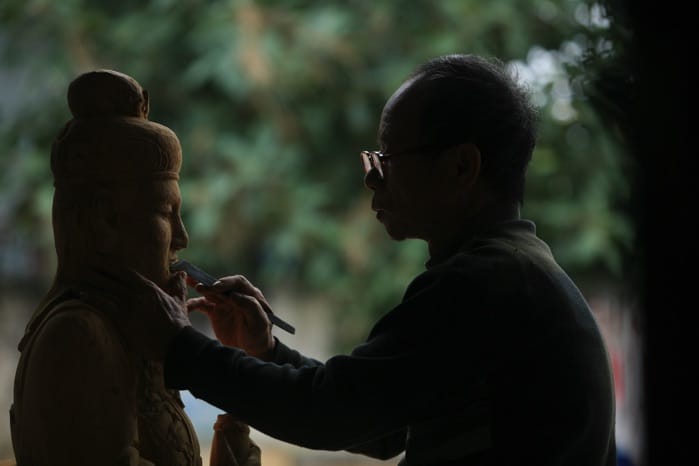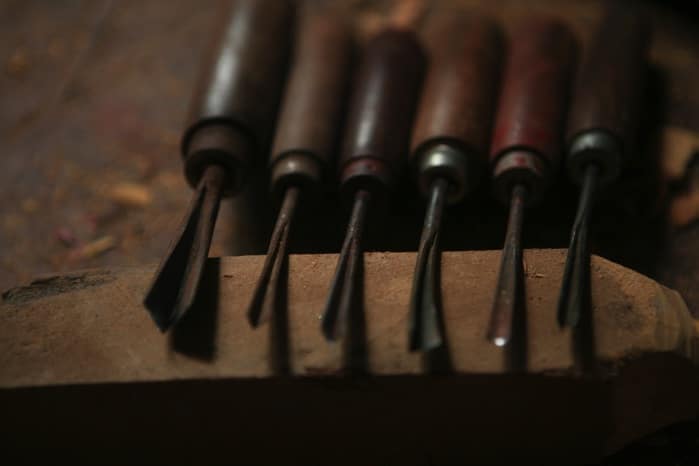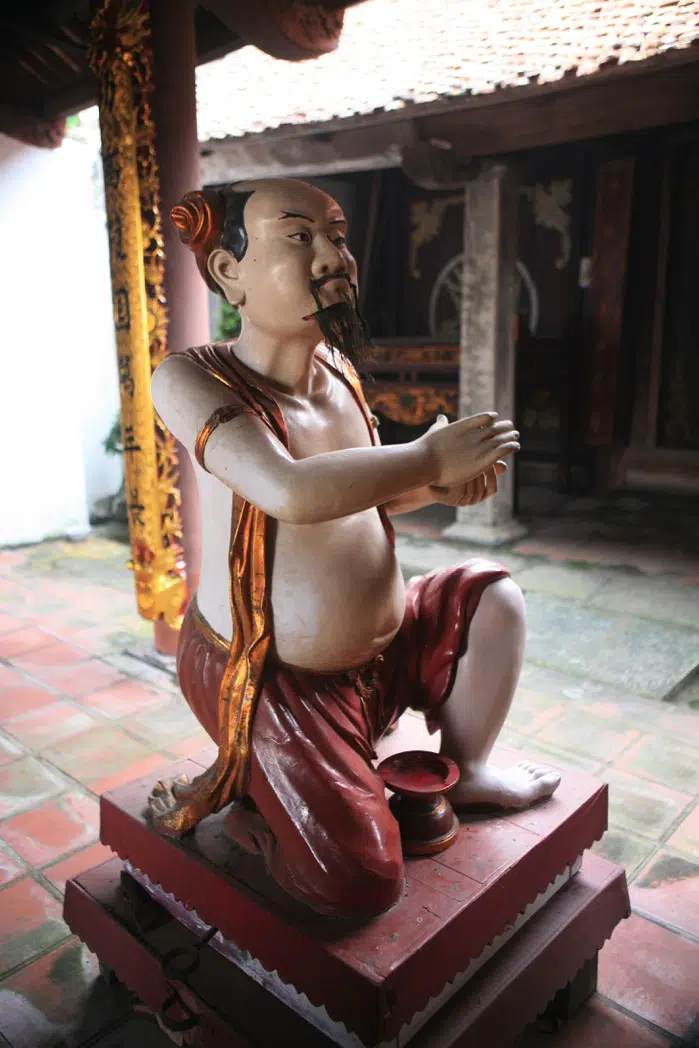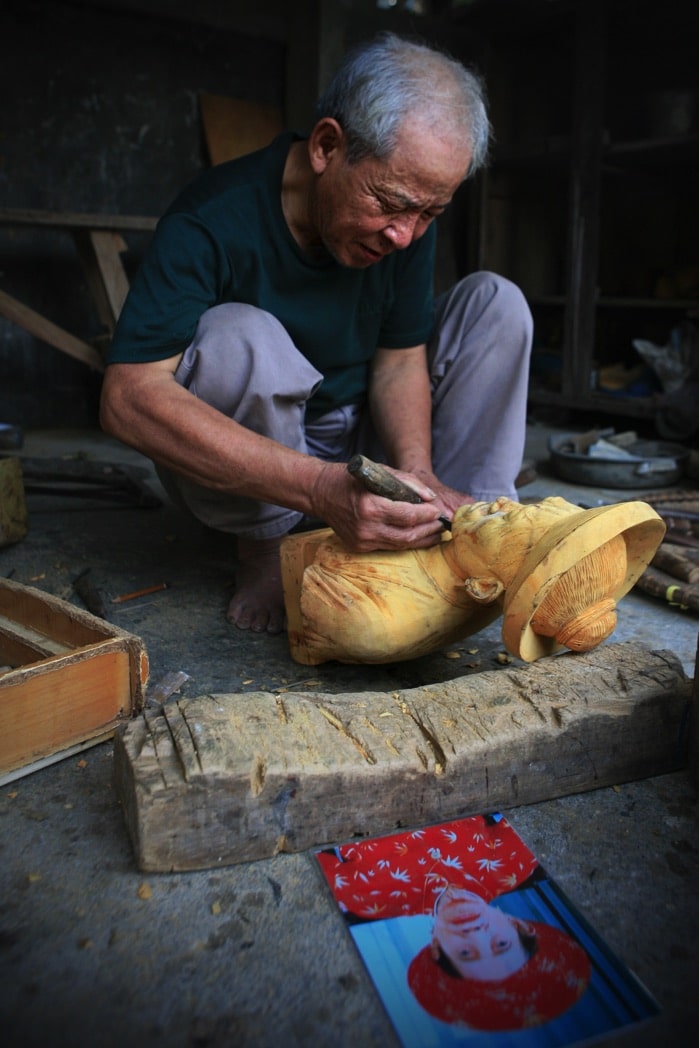For 700 years, the northern village of Bao Ha has produced soulful woodcarvings

The woodcarving village of Bao Ha is located in Dong Minh Commune, Vinh Bao District, Haiphong. According to legend, the 15th century founder of the village, Nguyen Cong Hue, liked to carve funny animals out of bits of scrap wood as a child. He might turn a lumpy bamboo root or rugged jackfruit root into a dragon, tortoise or phoenix. Banana bulbs, cassava roots and coconut shells turned into the Buddha or temple gatekeepers. When Ming troops invaded, talented artisans, including Nguyen Cong Hue, were forced into slavery. He spent a decade working in China, learning more skills, which he brought back to his homeland. He is said to have mastered the arts of wood carving, lacquering, weaving and performing acupuncture with sagebrush leaves. Later generations of craftsmen in Bao Ha included To Phu Vuong, To Phu Luat and Hoang Dinh Uc, who brought fame to the village. Till this day, Bao Ha is known for its wood carving and lacquering.

A pair of funny gatekeepers known as “tùy” stand in the village’s shrine. While the statues are human-like, they feature short horns, protruding snouts, short foreheads, lion noses and laughing mouths. The bodies reveal saggy bosoms, big bellies and a conspicuous navel above a short skirt. The arms are curvy and grip bowls of offerings dedicated to deities. Carved from stone or wood, or fashioned from clay, these gatekeepers guard temples, pagodas and shrines. The funny gatekeepers are often displayed in houses because of their humorous and optimistic appearance. The gatekeepers in Bao Ha Shrine are made of wood gilded in lacquer. They stand in the worship hall before the entrance to the rear hall. These images represent two filial and reliable servants of the titular god. Upon entering the shrine, visitors see these funny statues and feel uplifted.

Some rules govern these statues’ creation. The length of the face should be half the width of the shoulder. The thigh bones should be one quarter the length of the statue’s overall height. The funny gatekeepers are short in order to emphasize their respectful kowtowing to the deities. Rounded shapes and stocky figures symbolize jolly amusement. The two gatekeepers have two different smiles. One laughs out loud, while the other tries to hold back his laughter. “The pair depicts one fearful gatekeeper and one bold one. Their two smiles represent yin and yang,” explained the craftsman Hoang Van Sam, whose family has carved wooden statues for eight generations.

As well as displaying skillful carvings, wooden statues from Bao Ha have the liveliness of true art. The village’s carvers work with jackfruit wood, which is soft, elastic, resistant to termites and water, widely available and less expensive than some other woods. Parts of the statue are carved and jointed to form the complete statue. After carving, the statue’s clothes and features must be painted and gilded. It generally takes about ten days to carve the statue’s form and five days to paint and finish the statue. The statues are gilded to help preserve them. Along with statues, carvers in Bao Ha produce ceremonial items such as incense urns, gilded signs, parallel sentences, gilded altar gates and lacquer paintings.

Drawing from the village’s wood sculpting traditions, a villager named Dao Minh Tuan founded a puppet show. Visitors to Bao Ha can now enjoy water puppet shows performed by the Minh Tan Water puppetry troupe. Today, Bao Ha village draws both local and foreign visitors, who are welcomed by the funny gatekeepers in the village’s shrine. When they leave, many visitors take newly carved statues of these cheery gatekeepers home with them.










